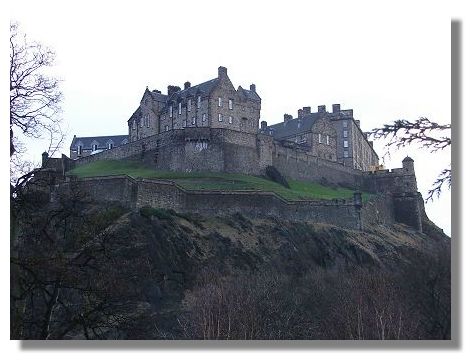
Many of the photographs of Edinburgh Castle on the Rampant Scotland web site were taken when there was blue sky and a few puffy white clouds. But here is the castle at its brooding best, on a cold January morning, with the wind whistling through the trees and little vegetation growing on the rocks below the walls.
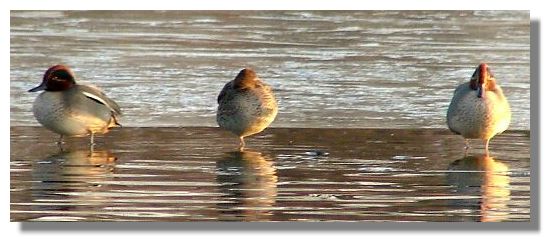
The low overnight temperatures meant that many lochs and ponds remained frozen at this time of year. These teal may well have travelled from their usual stretch of water to Hogganfield Loch in Glasgow, where they found at least some of the water was still unfrozen. While they may look a bit disconsolate standing on the ice with a layer of water on top, the photo was taken at a time when they are often having their afternoon siesta - the one in the middle is certainly dreaming of spring and warmer weather...
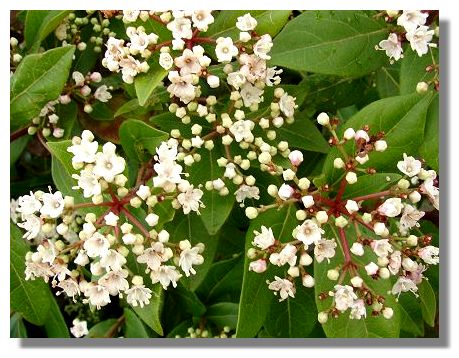
Flowers are in very short supply in Scotland at this time of year, but viburnum is one of the exceptions. The shrub was growing in a suburban garden near Glasgow.
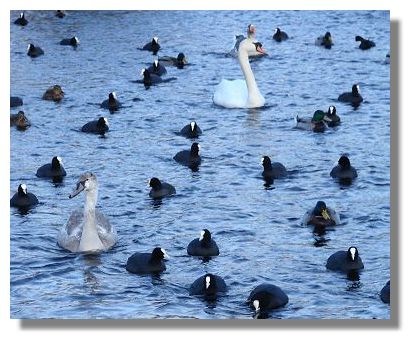
This flotilla of coots, accompanied by a swan and a cygnet and a few mallards, were heading to the side of the loch at Drumpellier Country Park in North Lanarkshire because there was some bread being thrown to help them through the cold winter day. The swans actually have great difficulty in getting any of the food - the army of little coots darts in first, before the swans can get their long necks down to the water!
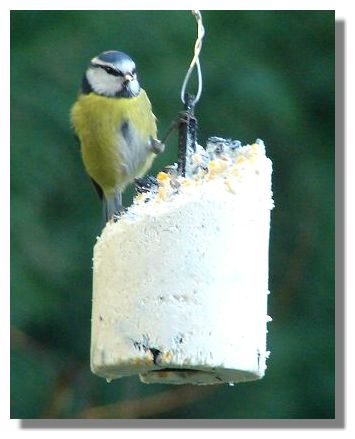
During the recent very cold weather, a "peanut brick" has been hung out on a branch of a hawthorn tree in my own garden. While the squirrels are also likely to attempt to reach it too (with varied levels of success!), the local birds get a good share of the goodies too. This bluetit looks most proprietorial, standing with one leg on top of the "brick" and the other on the supporting wire!
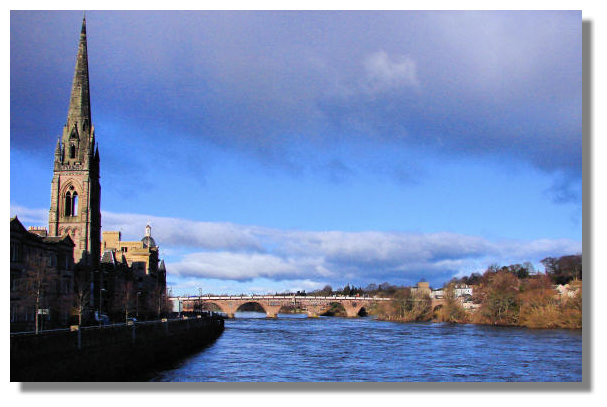
After all the recent rain, the river Tay was flowing fast and high. The flood defences which were built after a number of disastrous occasions when the river overflowed its banks - and they seem to work well in the centre of the town.
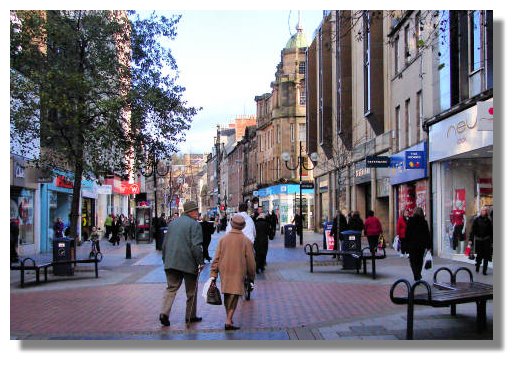
The High Street in Perth is still the retail heart of the town, despite the creation of a number of central shopping malls. Now pedestrianised, there are a number of sculptures, with links to the area, along its length.
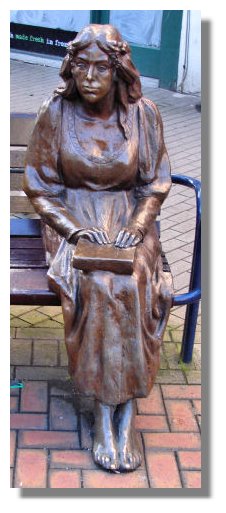
It was Sir Walter Scott who made the "Fair Maid of Perth" or Catherine Glover, a well-known celebrity in his novel of with that name. The 17th century "Fair Maid's House" in Perth is the oldest surviving house in the town. Catherine Glover was the daughter of a glovemaker in Perth, who kissed Henry Smith, an armourer, while he is sleeping, on Valentine's Day. Although Catherine later refused his proposal of marriage, she eventually marries him - at the end of the book. Scott's novel has a parallel plot, about the romance of Prince James, the son of King Robert III of Scotland, and Louise "the Glee-Maiden."
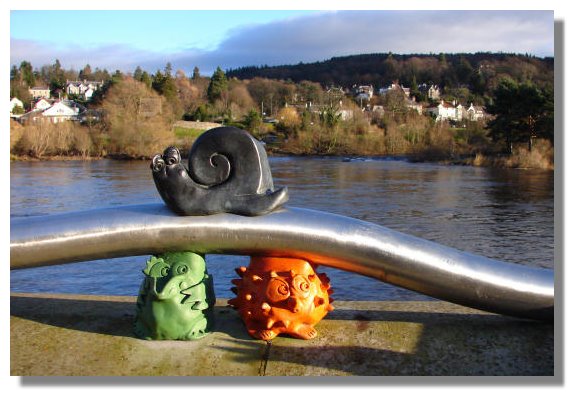
Much of the sculpture around the streets of Perth is likely to give rise to a smile (and none the worse for that) such as these whimsical animals on top of the walls which form part of the flood defences.
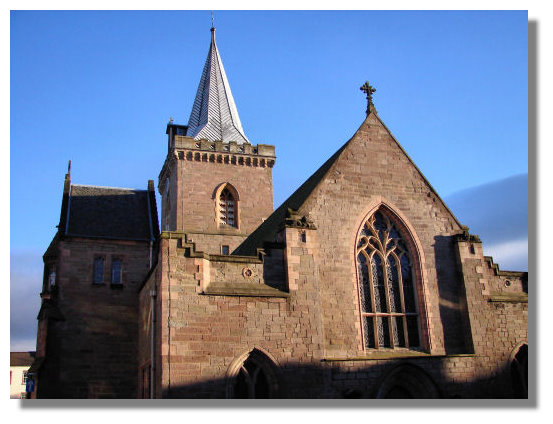
John Knox, who led the Reformation of the church in Scotland, preached in St John's Kirk in Perth (seen here) in May 1559. A church has stood on the site for more than 800 years and, although much modified over the years, the oldest part of the existing building dates from the 15th century.
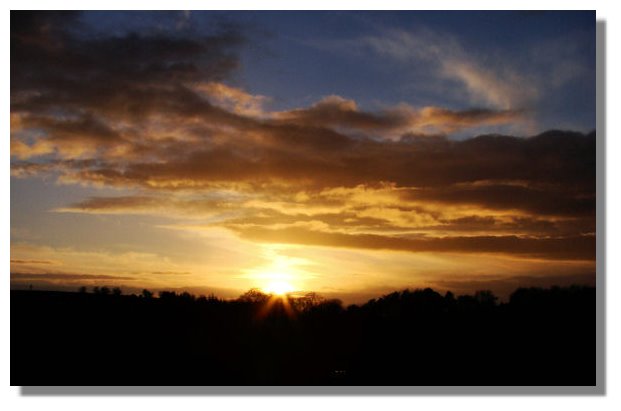
The sun still sets fairly early at this time of year (this picture was taken at 4.30pm) so it soon sinks below the horizon - in a blaze of gloriously coloured skies!
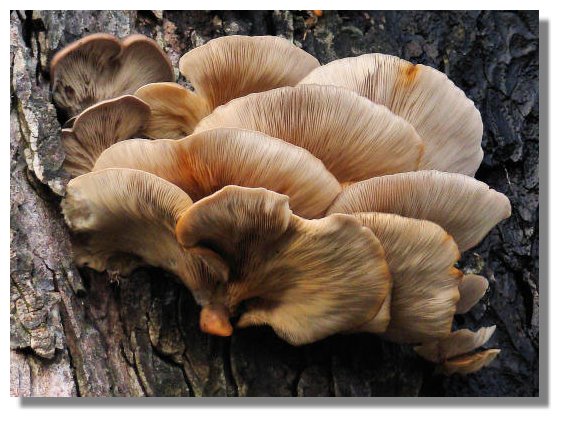
A tree which had been struck by lightning many years ago failed to recover and withered and died. But that provides an opportunity for fungus to take hold. It is now covered in fungi - this is just a small selection.
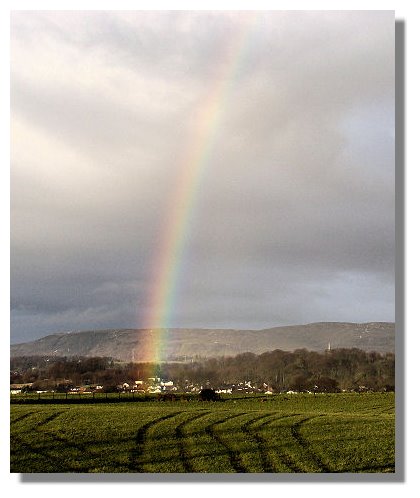
Ever since the story of Noah and the rainbow became part of our culture, we have always responded with pleasure when we see one in the sky - even though we now know it is due to the refraction of sunlight on raindrops. But maybe there is a pot of gold at the foot of this one... The backdrop is the Campsie Hills, north of Glasgow.
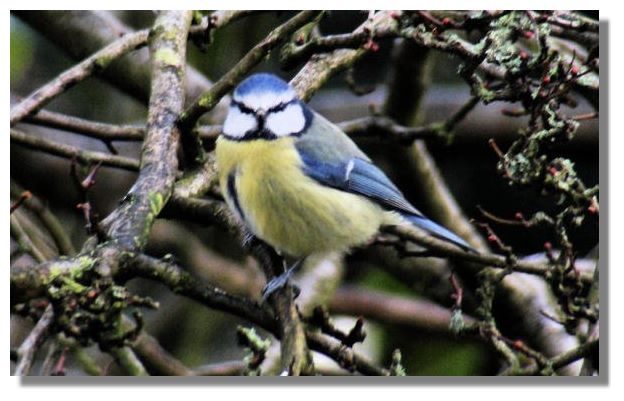
Looking a bit like an old-time bandit with those black markings across its eyes, this Blue Tit has just been "robbing" the nuts from the bird-feeder hanging on a tree in my back garden. The picture also shows the red buds of the hawthorn beginning to expand in a portent of spring.
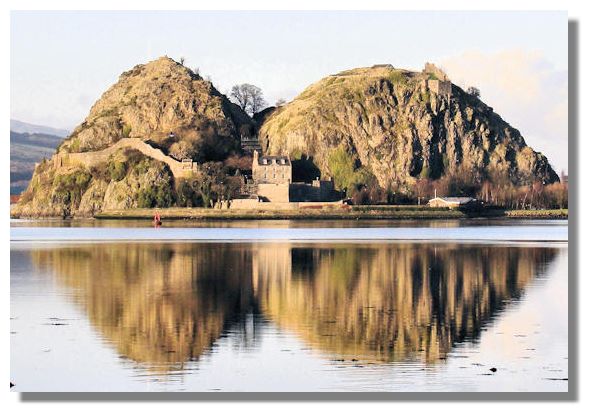
The earliest recorded reference to a defensive fortification at Dumbarton is when St Patrick wrote in 450AD to the King of Strathclyde about a raid by his followers on some of the Irish Saint's converts. But the volcanic plug, overlooking the river Clyde, where it is joined by the river Leven, would have been a natural defensive location even before then. The Kingdom of Strathclyde, with its capital at Dumbarton, spread south from the river Clyde to cover much of south-west Scotland. A new castle was built as part of the western defences against the Norsemen who controlled the western seaboard. This role declined after the defeat of the Vikings at the Battle of Largs in 1263. In the 15th century, the Governor of the castle, Lord Darnley, son of the Earl of Lennox, rebelled against King James IV. The King besieged the castle but, after failing at the first attempt, he had to bring the great gun Mons Meg (which is now in Edinburgh Castle), to finish the job. Seen in this photograph is the Governor's House, with King George's Battery in front. It was built in the first half of the 18th century, replacing the earlier medieval gatehouse. Now that the castle is owned by Historic Scotland, the Governor's House has become a museum and visitor centre.
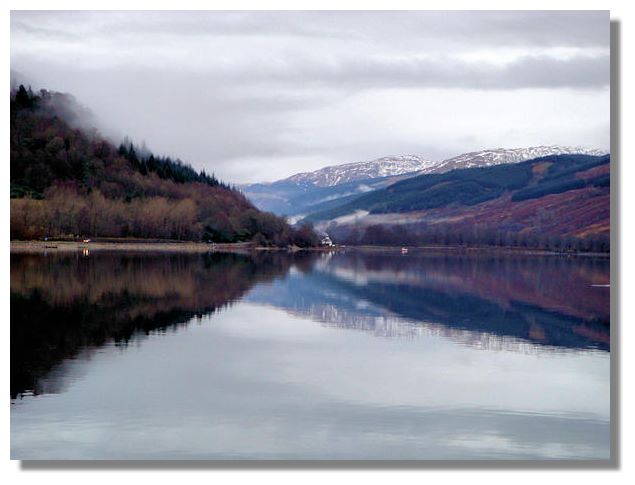
Loch Fyne, is a sea loch which runs 40 miles deep into Argyllshire, making it the longest of Scotland's sea lochs. Loch Fyne is famous for its oyster fishery and is a popular area for sport diving and angling. It is also a popular tourist destination with attractions such as Inveraray Castle. This photo, with the loch looking like glass, was taken at Inveraray by Vicki, a Scottish Snippets reader.
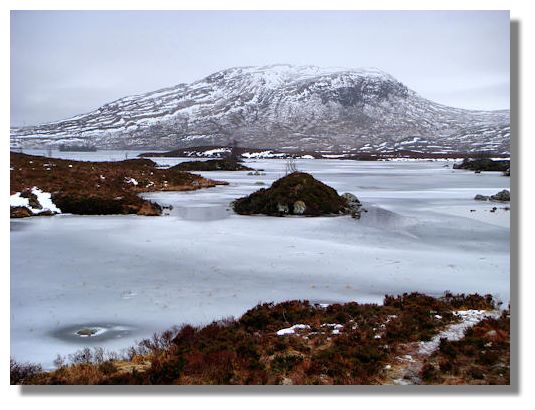
Here is another of Vicki's wintry scenes, this time in the hills near Oban. The small lochs there were frozen and then had a covering of snow.
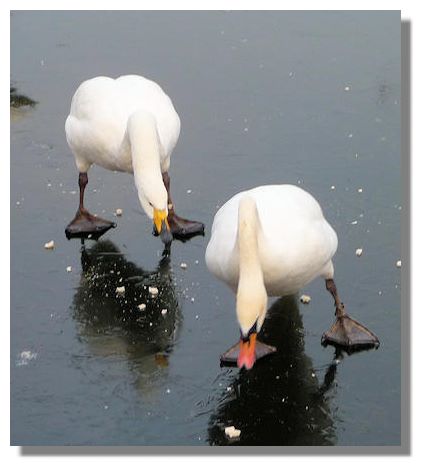
Birds that normally feed on Scottish lochs have have a tough time when low temperatures cause many loch to freeze over. Swans always look ungainly out of the water, but these two (a Whooper Swan with its yellow bill and a Mute Swan) look even more awkward as they try to shuffle across the ice on Hogganfield Loch in Glasgow trying to reach some bread that has been thrown for them. Fortunately, at times like these, many people come to the loch with food. Indeed, there would not be so many water birds on lochs in public parks if visitors didn't augment their food supply.
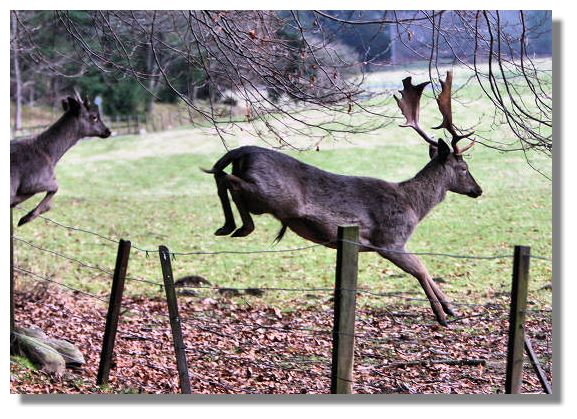
My photos of deer are either of the almost tame ones at country parks or are grainy, distant tele-photo shots of wild deer that run as soon as my camera points at them. So I was impressed by a sequence of close-up photos of a small herd of deer jumping over a fence. The Snippets reader who sent them to me said that his youngest son (George Thomson Jnr) took the pictures near Dunkeld in Perthshire last weekend. It was suggested that the deer "were jumping the wire fence to get to the pub before closing time!"
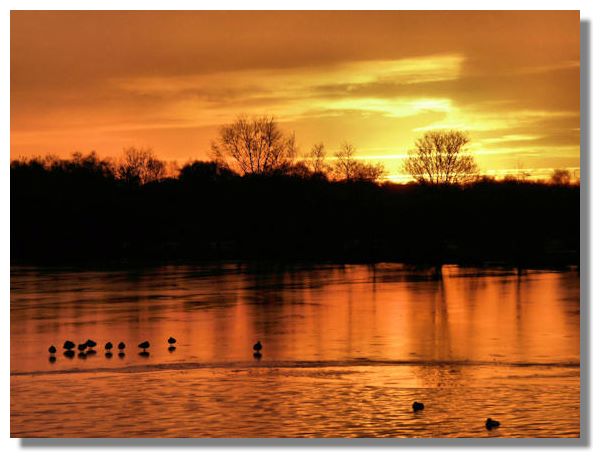
Although many of the days at this time of year are dull and overcast, there are also days when a wintry sun has brightened up the landscape. That has meant that the setting sun has sometimes created a fiery glow in the west - as here, at Drumpellier Country Park in North Lanarkshire. Part of the loch is frozen over and the birds are standing on the ice.
If you want to look back at other editions of these photos of Scotland week by week, there is an Index Page

Where else would you like to go in Scotland?


